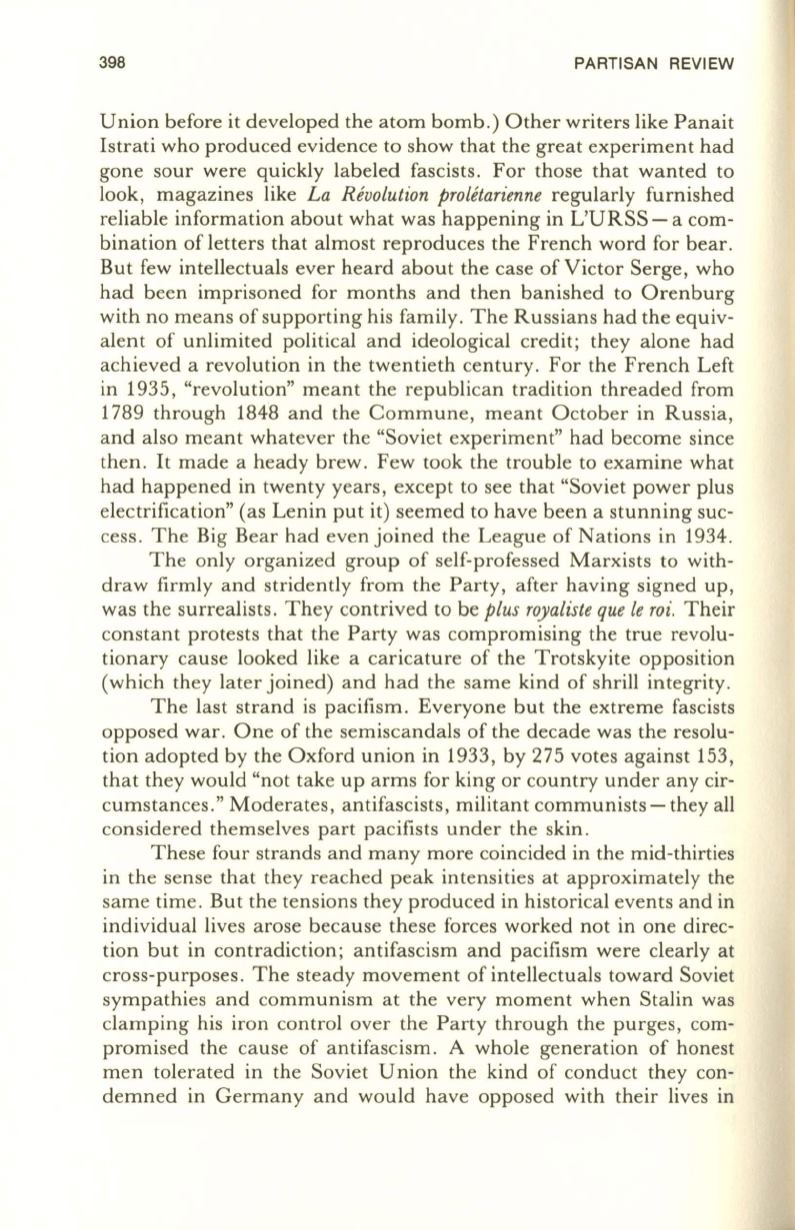
398
PARTISAN REVIEW
Union before it developed the atom bomb .) Other writers like Panait
Istrati who produced evidence to show that the great experiment had
gone sour were quickly labeled fascists. For those that wanted to
look, magazines like
La Revolution proLetarienne
regularly furnished
reliable information about what was happening in L'URSS - a com–
bination of letters that almost reproduces the French word for bear.
But few intellectuals ever heard about the case of Victor Serge, who
had been imprisoned for months and then banished to Orenburg
with no means of supporting his family . The Russians had the equiv–
alent of unlimited political and ideological credit ; they alone had
achieved a revolution in the twentieth century . For the French Left
in 1935, "revolution" meant the republican tradition threaded from
1789 through 1848 and the Commune, meant October in Russia,
and also meant whatever the "Soviet experiment" had become since
then . It made a heady brew. Few took the trouble to examine what
had happened in twenty years, except to see that "Soviet power plus
electrification" (as Lenin put it) seemed to have been a stunning suc–
cess. The Big Bear had even joined the League of Nations in 1934.
The only organized group of self-professed Marxists to with–
draw firmly and stridently from the Party, after having signed up ,
was the surrealists. They contrived to be
plus royaliste que le roi.
Their
constant protests that the Party was compromising the true revolu–
tionary cause looked like a caricature of the Trotskyite opposition
(which they later joined) and had the same kind of shrill integrity.
The last strand is pacifism . Everyone but the extreme fascists
opposed war. One of the semiscandals of the decade was the resolu–
tion adopted by the Oxford union in 1933, by 275 votes against 153,
that they would "not take up arms for king or country under any cir–
cumstances." Moderates, antifascists, militant communists - they all
considered themselves part pacifists under the skin.
These four strands and many more coincided in the mid-thirties
in the sense that they reached peak intensities at approximately the
same time. But the tensions they produced in historical events and in
individual lives arose because these forces worked not in one direc–
tion but in contradiction; antifascism and pacifism were clearly at
cross-purposes. The steady movement of intellectuals toward Soviet
sympathies and communism at the very moment when Stalin was
clamping his iron control over the Party through the purges , com–
promised the cause of antifascism. A whole generation of honest
men tolerated in the Soviet Union the kind of conduct they con–
demned in Germany and would have opposed with their lives in


